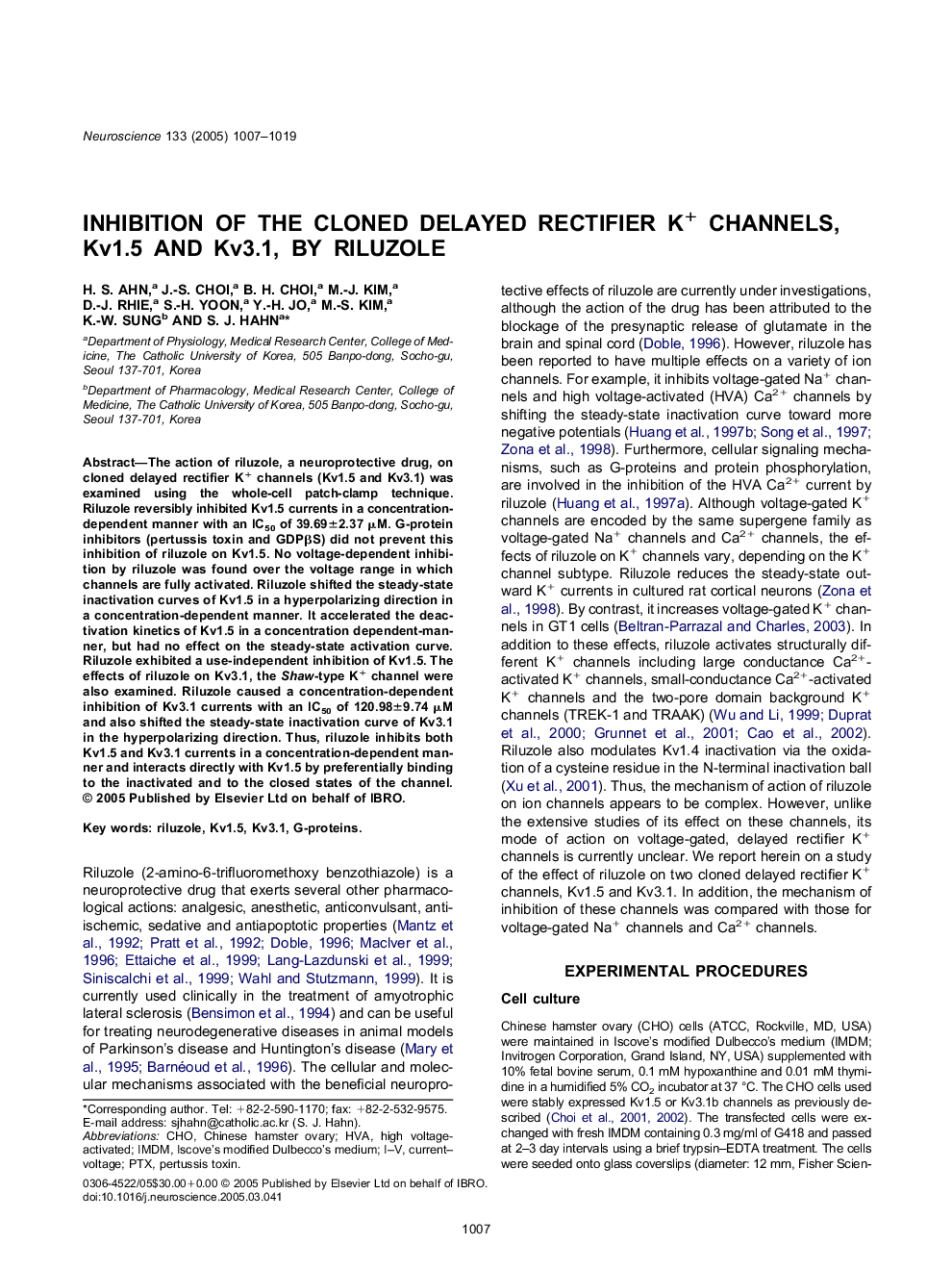| Article ID | Journal | Published Year | Pages | File Type |
|---|---|---|---|---|
| 9425855 | Neuroscience | 2005 | 13 Pages |
Abstract
The action of riluzole, a neuroprotective drug, on cloned delayed rectifier K+ channels (Kv1.5 and Kv3.1) was examined using the whole-cell patch-clamp technique. Riluzole reversibly inhibited Kv1.5 currents in a concentration-dependent manner with an IC50 of 39.69±2.37μM. G-protein inhibitors (pertussis toxin and GDPβS) did not prevent this inhibition of riluzole on Kv1.5. No voltage-dependent inhibition by riluzole was found over the voltage range in which channels are fully activated. Riluzole shifted the steady-state inactivation curves of Kv1.5 in a hyperpolarizing direction in a concentration-dependent manner. It accelerated the deactivation kinetics of Kv1.5 in a concentration dependent-manner, but had no effect on the steady-state activation curve. Riluzole exhibited a use-independent inhibition of Kv1.5. The effects of riluzole on Kv3.1, the Shaw-type K+ channel were also examined. Riluzole caused a concentration-dependent inhibition of Kv3.1 currents with an IC50 of 120.98±9.74μM and also shifted the steady-state inactivation curve of Kv3.1 in the hyperpolarizing direction. Thus, riluzole inhibits both Kv1.5 and Kv3.1 currents in a concentration-dependent manner and interacts directly with Kv1.5 by preferentially binding to the inactivated and to the closed states of the channel.
Keywords
Related Topics
Life Sciences
Neuroscience
Neuroscience (General)
Authors
H.S. Ahn, J.-S. Choi, B.H. Choi, M.-J. Kim, D.-J. Rhie, S.-H. Yoon, Y.-H. Jo, M.-S. Kim, K.-W. Sung, S.J. Hahn,
